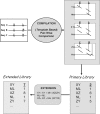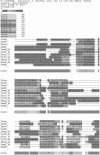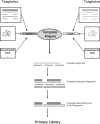Upcoming challenges for multiple sequence alignment methods in the high-throughput era
- PMID: 19648142
- PMCID: PMC2752613
- DOI: 10.1093/bioinformatics/btp452
Upcoming challenges for multiple sequence alignment methods in the high-throughput era
Abstract
This review focuses on recent trends in multiple sequence alignment tools. It describes the latest algorithmic improvements including the extension of consistency-based methods to the problem of template-based multiple sequence alignments. Some results are presented suggesting that template-based methods are significantly more accurate than simpler alternative methods. The validation of existing methods is also discussed at length with the detailed description of recent results and some suggestions for future validation strategies. The last part of the review addresses future challenges for multiple sequence alignment methods in the genomic era, most notably the need to cope with very large sequences, the need to integrate large amounts of experimental data, the need to accurately align non-coding and non-transcribed sequences and finally, the need to integrate many alternative methods and approaches.
Figures



References
-
- Abhiman S, et al. Prediction of function divergence in protein families using the substitution rate variation parameter alpha. Mol. Biol. Evol. 2006;23:1406–1413. - PubMed
-
- Armougom F, et al. The iRMSD: a local measure of sequence alignment accuracy using structural information. Bioinformatics. 2006a;22:e35–e39. - PubMed
-
- Battey JN, et al. Automated server predictions in CASP7. Proteins. 2007;69(Suppl. 8):68–82. - PubMed
-
- Bauer M, et al. Multiple structural RNA alignment with Lagrangian relaxation. Lect. Notes Comput. Sci. 2005:303–314.
Publication types
MeSH terms
LinkOut - more resources
Full Text Sources
Other Literature Sources

